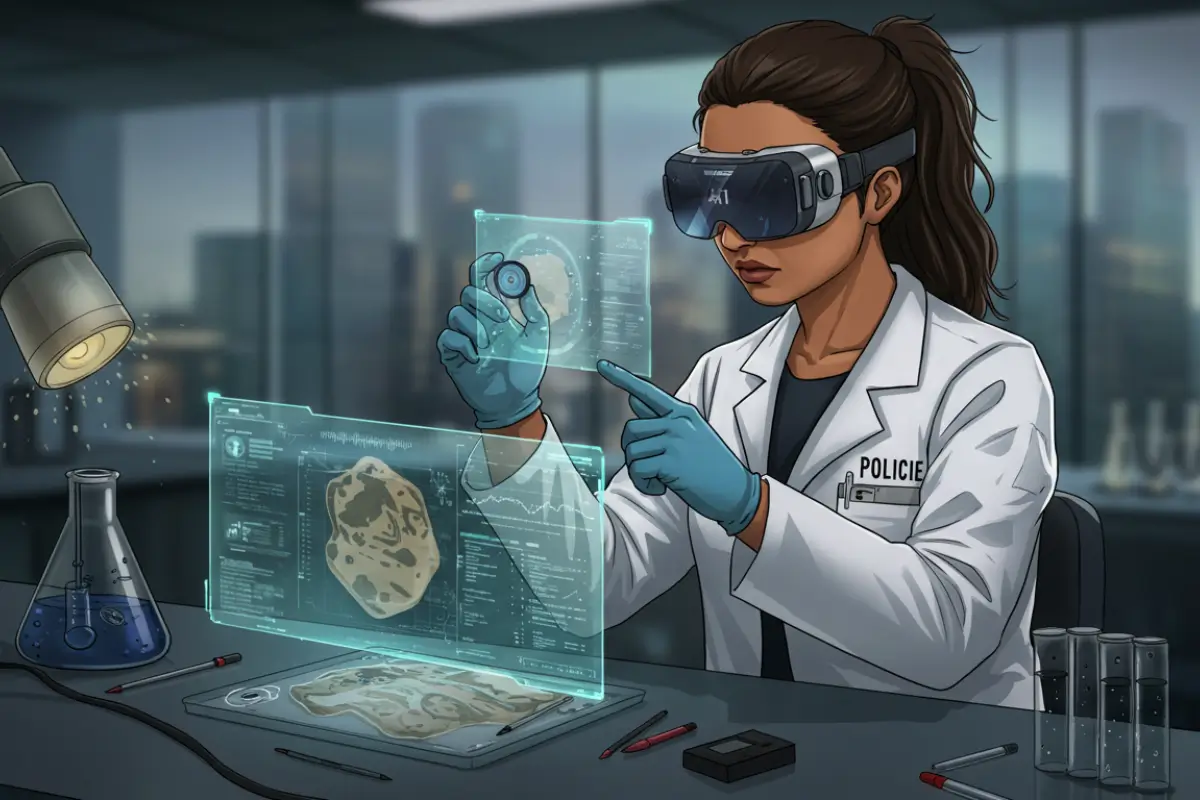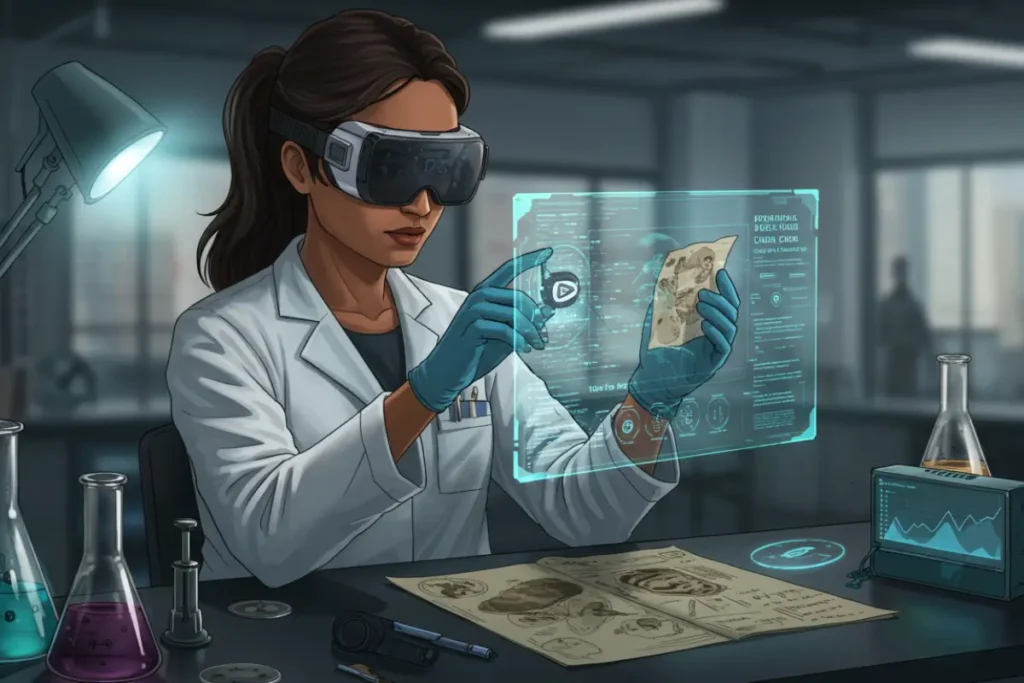AI and the Future of Crime Solving
- May 11, 2025
- 0
So, how do you understand the intersection between AI and crime-solving? It’s a fascinating topic, and one that feels like it was pulled straight from a sci-fi movie.
So, how do you understand the intersection between AI and crime-solving? It’s a fascinating topic, and one that feels like it was pulled straight from a sci-fi movie.

So, how do you understand the intersection between AI and crime-solving? It’s a fascinating topic, and one that feels like it was pulled straight from a sci-fi movie.
Imagine a world where artificial intelligence can predict crimes before they happen, identify suspects using facial recognition, and even analyze criminal behavior to prevent future offenses. Sounds pretty cool, right? But it’s not just science fiction.
This is the reality we’re stepping into, and it’s happening faster than you might think.

AI crime-solving is the application of artificial intelligence to assist law enforcement in detecting, investigating, and preventing crimes. It’s like having a super detective who never sleeps and can process massive amounts of data in seconds.
From identifying criminal patterns to analyzing surveillance footage, AI is revolutionizing the way we approach crime-solving. And it’s not just about catching bad guys – it’s about preventing crime from happening in the first place.
Take, for example, facial recognition software. This tech can scan thousands of faces in mere seconds, cross-referencing them with criminal databases to identify suspects.
Or how about predictive policing? AI algorithms can analyze crime data and predict where future crimes are likely to occur. It’s like having a crystal ball – but instead of seeing the future, you’re using data to make educated guesses.
One of the most significant ways AI is changing crime-solving is through data analysis. Think about all the data that gets generated every day – phone records, social media posts, surveillance footage, financial transactions. It’s a lot, right?
For human detectives, sifting through all that information is like finding a needle in a haystack. But for AI? It’s a piece of cake.
AI systems can scan through mountains of data in minutes, identifying connections and patterns that might otherwise go unnoticed. For instance, AI can detect links between seemingly unrelated crimes, helping investigators piece together a bigger picture.
It can also analyze phone records to track suspect movements or flag suspicious financial transactions that might indicate criminal activity.
Moreover, AI can assist in forensic analysis. From analyzing fingerprints to reconstructing crime scenes using 3D models, AI is taking traditional forensics to a whole new level.
Imagine a crime scene where AI drones can capture every detail, create a virtual model, and provide investigators with a 360-degree view of the crime scene. That’s not just futuristic – it’s happening now.

Like anything involving technology, AI in crime-solving comes with its pros and cons. On the one hand, AI can process data faster and more accurately than humans, reducing human error and increasing the chances of catching criminals.
It can also work 24/7 without getting tired, making it a valuable tool for ongoing investigations.
But there’s a flip side to that coin. What about privacy? Facial recognition systems can track people’s movements without their consent, raising serious ethical concerns.
And then there’s the issue of bias. If AI systems are trained on biased data, they can perpetuate those biases, leading to wrongful accusations and unfair treatment.
There’s also the question of accountability. If an AI system identifies someone as a suspect, who’s responsible if that person turns out to be innocent?
The developers? The police? The AI itself? These are complex questions that society needs to address as AI becomes more integrated into law enforcement.
In the real world, AI is already being used to tackle crime in some pretty innovative ways. For example, in Los Angeles, the police department uses predictive policing software to map out potential crime hotspots.
In China, facial recognition systems are so advanced they can identify a suspect in a crowd of thousands. And in the UK, AI is being used to analyze social media posts for signs of criminal activity, such as gang-related violence or human trafficking.
But it’s not all perfect. There have been cases of AI systems misidentifying suspects or misinterpreting data, leading to wrongful arrests. And that’s why it’s so important to keep refining these technologies and ensuring they are as accurate and unbiased as possible.

So, what’s the future hold for AI and crime-solving? Well, it’s likely we’ll see AI becoming even more advanced, with predictive systems that can not only identify potential suspects but also predict criminal behavior before it happens.
Think Minority Report, but without the creepy precogs.
AI may also become more integrated with other tech, such as drones and robotic surveillance systems. Imagine a network of AI-powered drones patrolling city streets, equipped with facial recognition and thermal imaging to detect criminal activity in real-time.
It sounds far-fetched, but it’s closer than you think.
And then there’s AI in cybersecurity. With cybercrimes on the rise, AI is already being used to detect and prevent hacking attempts, phishing scams, and other digital threats. In the future, AI may even be able to predict cyberattacks before they happen, protecting both individuals and organizations from digital threats.
Yes, AI can predict crime hotspots based on historical data, potentially preventing crimes before they happen.
Privacy concerns, data bias, and the potential for wrongful accusations are major risks associated with AI crime-solving.
Yes, predictive policing in Los Angeles and facial recognition systems in China are examples of AI being successfully used in crime-solving.
If you found this article interesting, don’t forget to check out more articles on AI and the future of technology over at Futuristic Intellect. And if you liked what you read, drop a comment below – I’d love to hear your thoughts!